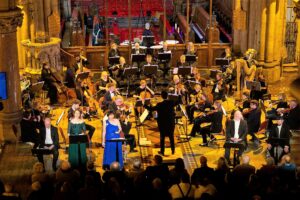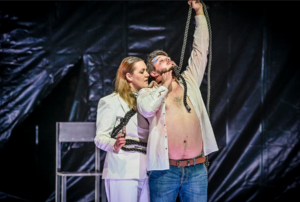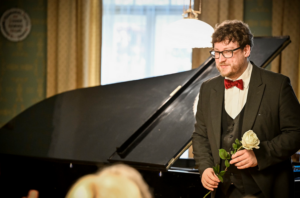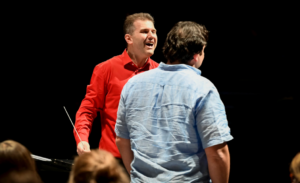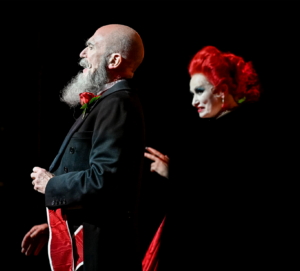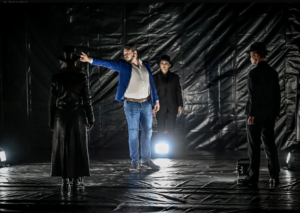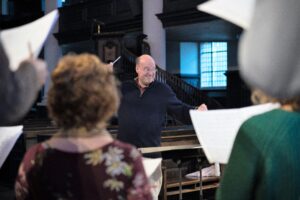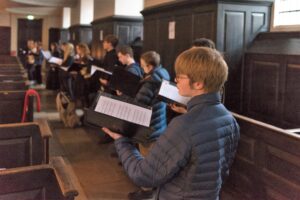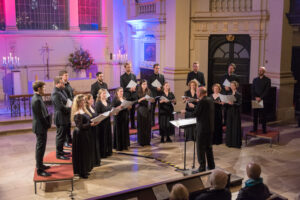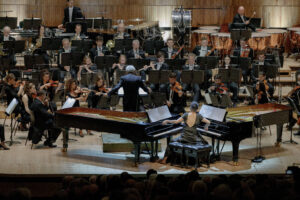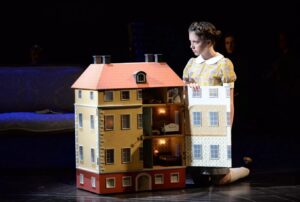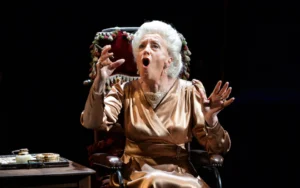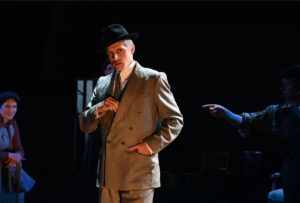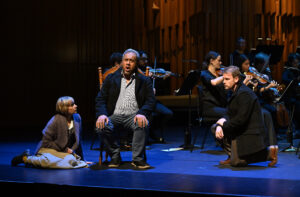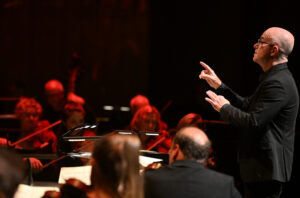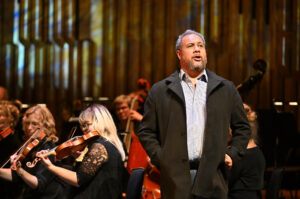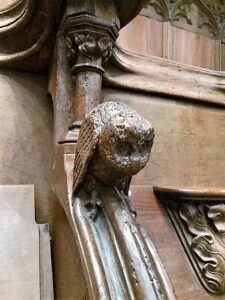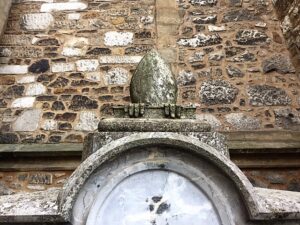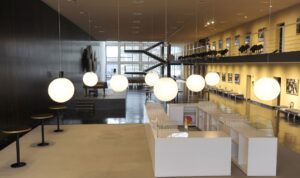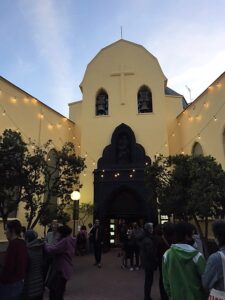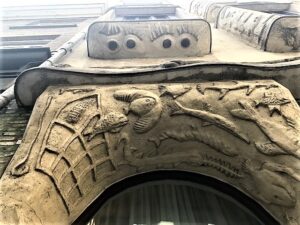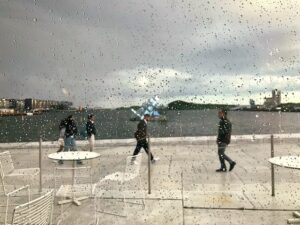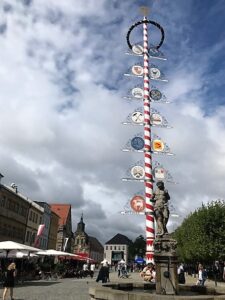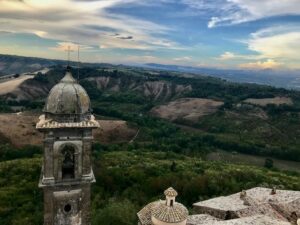Marek i Izolda
Kiedyś zaczęło się tutaj szaleństwo Szekspirowskiego Makbeta. Dziś Inverness uchodzi za jedno z najszczęśliwszych miast Szkocji. W pięknej leży okolicy, podobnie jak legendarny zamek tana Cawdoru, i pogodnych ma mieszkańców – dumnych ze swej wspólnoty, rozmiłowanych w miejscowej przyrodzie, zadowolonych z oferty społecznej i kulturalnej miasta. Dwa i pół roku temu miałam okazję się przekonać, z jakim entuzjazmem powitali kolejne przedsięwzięcie orkiestry kameralnej Mahler Players pod dyrekcją jej założyciela Tomasa Leakeya – koncert z Verklärte Nacht Schönberga w autorskiej wersji na orkiestrę smyczkową oraz pierwszym aktem Wagnerowskiej Walkirii w opracowaniu Matthew Kinga i Petera Longwortha na zespół zaledwie dwudziestu kilku muzyków. Pół roku później Leakey zaprezentował w podobnym składzie dwie symfonie Sibeliusa. W lockdownie nagrał ze swoim ansamblem pierwszą płytę – z zamówioną u Kinga symfonią Richard Wagner in Venice na kanwie późnych, fragmentarycznych szkiców kompozytora. Debiutancki CD wywołał spore zamieszanie na brytyjskim rynku fonograficznym i doczekał się znakomitych recenzji, w tym autorstwa niżej podpisanej. Po zniesieniu restrykcji Leakey zdążył jeszcze uraczyć krajan z Highlands kameralnymi wersjami dzieł symfonicznych Beethovena i Mahlera, po czym wrócił do swojego „Wagner Project”: bogatszy między innymi doświadczenia wyniesione ze stypendium w Bayreuth, ufundowanego w 2020 roku przez Wagner Society of Scotland.
Kiedy doniósł mi w liście, że tym razem przygotował z Kingiem i Longworthem drugi akt Tristana, po czym zapewnił, że w grudniu w Inverness jest równie pięknie jak w czerwcu, tylko dni krótsze, przyjęłam zaproszenie bez namysłu. Rankiem w dniu koncertu wybrałam się na długi spacer brzegiem zatoki Moray Firth, żeby napatrzyć się fal równie ciężkich i ołowianych jak te, na których oszalały z tęsknoty Tristan wyglądał przybycia statku Izoldy. Wracałam przez Merkinch, dawną dzielnicę biedoty, która w latach, gdy Wagner pisał Tristana, zmagała się z koszmarem ostatniego wielkiego głodu w Szkocji. Wieczorem stawiłam się na posterunku w neogotyckiej katedrze św. Andrzeja, konsekrowanej niespełna dekadę po prapremierze opery. Wydawało mi się, że wiem, czego się spodziewać, zwłaszcza że w obsadzie znaleźli się wykonawcy ról tytułowych ze wznowienia Tristana w Longborough w roku 2017 – doświadczenia, po którym z nadmiaru emocji mało nie padłam trupem – oraz śpiewak-legenda, Sir John Tomlinson, jeden z najlepszych Wotanów w powojennej historii Bayreuth, a także Król Marek w inscenizacji z 1993 roku pod batutą Barenboima. Teraz miał znów wystąpić w tej roli, blisko trzydzieści lat po debiucie w Tristanie na Zielonym Wzgórzu.
Tristan w Inverness. Na pierwszym planie Peter Wedd, Laura Margaret Smith, Lee Bisset, John Tomlinson i Frederick Jones. Fot. z archiwum Mahler Players
W zaplanowanym bez przerwy koncercie Leakey poprzedził drugi akt Preludium do opery, domykając całość wstępem do aktu trzeciego oraz finałowym Liebestod. Pierwsze zaskoczenie przeżyłam w zetknięciu z bogactwem dźwiękowym aranżacji, rozpisanej na skład nieco większy niż w Walkirii, wciąż jednak złożony z zaledwie trzydziestu sześciu muzyków. King i Longworth nie poszli drogą, jaką podążył Matthias Wegele w ubiegłorocznym „kieszonkowym” Tristanie z Wiednia, rezygnując z kilku kluczowych instrumentów, między innymi harfy, i budując fakturę niejako od nowa – z intrygującym skądinąd skutkiem, choć pod pewnymi względami bliższym estetyce modernizmu. Autorzy opracowania dla Mahler Players postanowili dochować wierności partyturze i tak przeprowadzić redukcję, żeby słuchacze odnieśli wrażenie obcowania z dziełem granym w pełnej obsadzie. Wbrew pozorom nie jest to wcale proste. Tym większy podziw dla stylowej i wyważonej wersji Kinga i Longwortha, w której tylko sporadycznie dochodziło do zachwiania proporcji na niekorzyść smyczków. Z drugiej strony nie jestem pewna, czy da się tego w ogóle uniknąć w redukcji Tristana, skoro sam Wagner podkreślał wagę liczebności i jakości brzmieniowej kwintetu w partyturze.
Wykonanie w Inverness miało charakter typowo koncertowy, z solistami śpiewającymi od pulpitów. I z tym wiązało się kolejne moje zaskoczenie: Peter Wedd, Tristan wcielony, artysta, który dwukrotnie rzucił na kolana widownię LFO, nie tylko urodą głosu, lecz także niezwykłą muzykalnością i fenomenalną grą aktorską, tym razem nie próbował nawiązać z Lee Bisset choćby kontaktu wzrokowego. Śpiewał jakby do wewnątrz, w ogromnym skupieniu i z jakimś nieuchwytnym smutkiem, bez zapamiętanej z Longborough młodzieńczej żarliwości. Miałam poczucie, że Wedd żegna się ze swoim bohaterem, niejako osuwa się w jego śmierć, nie tyle prosi Izoldę, żeby poszła za nim w mrok Nocy, ile sam się w nim pogrąża – zrezygnowany, złamany, niechętny umierać. Jakoś mi się to kłóci z literą tekstu Wagnera, aczkolwiek muszę przyznać, że samo wykonanie było porywające. Ciemny tenor Wedda wciąż zyskuje na wyrazistości, zwłaszcza w dole skali, a jego wysokie dźwięki brzmią mocno i pewnie, choć czasem zdają się trochę przymglone. Śpiew Bisset, mimo pewnych mankamentów technicznych (drobne kłopoty intonacyjne na początku aktu) wydał się na tym tle bardziej ludzki, cieplejszy, skuteczniejszy jako wehikuł zróżnicowanych przecież emocji. Odniosłam tylko wrażenie, że obydwoje z takim zapamiętaniem cyzelują kształt każdej frazy, że po drodze gubią tekst libretta. Złożyłam to jednak na karb kapryśnej akustyki kościoła.
Tomas Leakey i John Tomlinson. Fot. z archiwum Mahler Players
Aż z krzesła wstał Tomlinson i zaśpiewał „Tatest du’s wirklich?”. I nagle się okazało, że każde słowo – idealnie wyartykułowane – uderza boleśnie jak sztylet. Z tak wstrząsającym ujęciem postaci Króla Marka nie zetknęłam się od czasu budapeszteńskiego występu Mattiego Salminena. Pisałam wtedy, że Salminen dał niedościgniony wzorzec interpretacji głębokiej, naznaczonej mądrością wieku. No to mam już dwa wzorce, całkiem odrębne i równie niedoścignione. Fiński bas wcielił się w Marka pełnego goryczy i rezygnacji. Tomlinson na przemian kipiał wściekłością i wił się z upokorzenia. Jego przeraźliwe „warum mir diese Schmach?” zabrzmiało jak ryk rannego zwierzęcia. Każdemu aktorowi szekspirowskiemu życzyłabym takiej umiejętności stopniowania tragizmu, jaką dysponuje ten śpiewak – niemłody, operujący głosem wyzbytym dawnego blasku, prowadzonym jednak po mistrzowsku, z niewiarygodnym wyczuciem wszelkich jego atutów i niedomogów. Mój szacunek do Tomasa Leakeya wzrósł wykładniczo. Trzeba być doprawdy niezwykle skromnym i wrażliwym człowiekiem, żeby namówić takiego artystę do udziału w tak nietypowym przedsięwzięciu.
Osobne brawa należą się dwojgu młodych śpiewaków, zwłaszcza aksamitnogłosej Laurze Margaret Smith, wzruszającej, choć trochę nieśmiałej Brangenie – co w pełni zrozumiałe, jako że Smith w ostatniej chwili zastąpiła w tej partii znacznie bardziej doświadczoną Alwyn Mellor. Frederick Jones niewiele miał do powiedzenia jako Melot, uczynił to jednak z przekonaniem i ładnie postawionym, urodziwym w barwie tenorem.
Zważywszy na skalę trudności przedsięwzięcia, orkiestra sprawiła się nad podziw dobrze – pod uważną, lecz wymagającą ręką Leakeya, który w kilku istotnych fragmentach zdecydował się na dość niewygodne, mocno osadzone tempa. Jeśli testował możliwości swoich muzyków, wyszli z tej próby zwycięsko. Grali mądrze i czule, nie wyłożyli kawy na ławę, dochowali nieodłącznej od tego dzieła tajemnicy. Udało im się podsumować Tristana w takim kształcie, w jakim zinterpretował go Karol Berger – pisząc, że jeśli ta opera „niesie jakiekolwiek pocieszenie, to nie przez to, co mówi o ludzkim losie, tylko dlatego, że w ogóle mówi o nim coś istotnego”.

